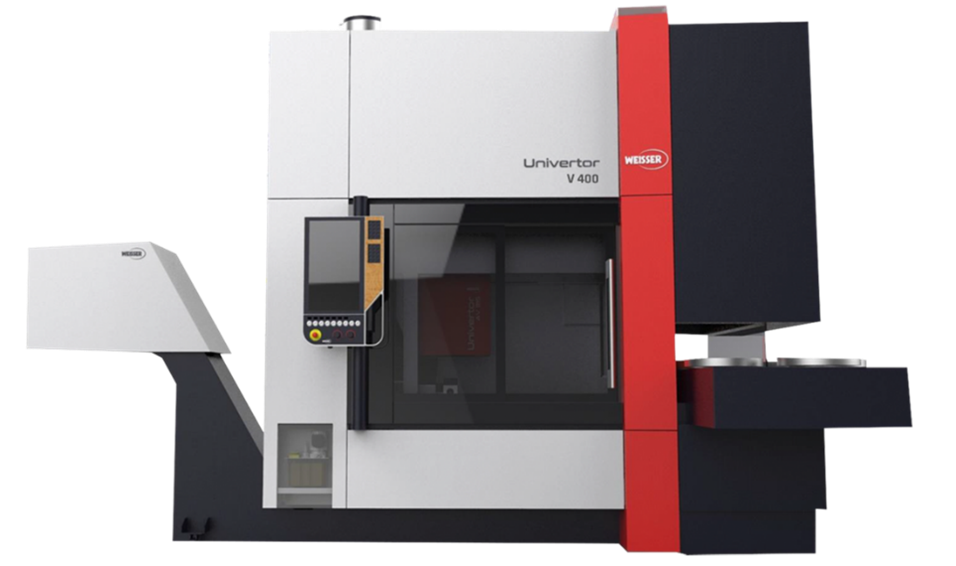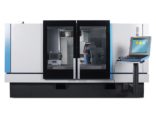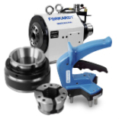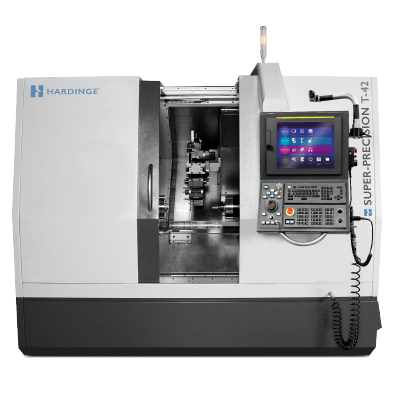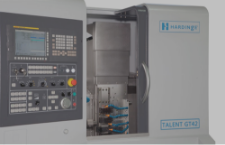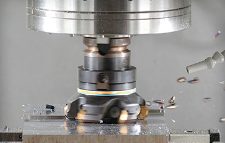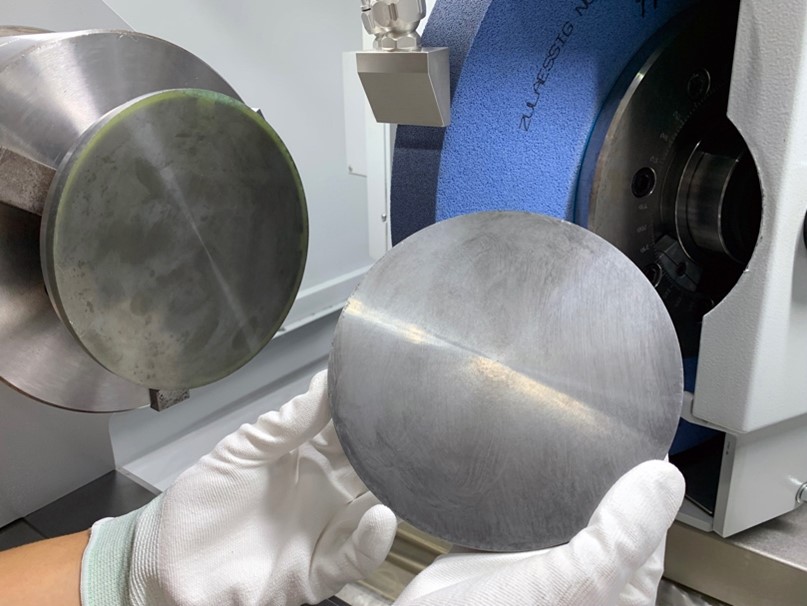BOULEPRO 200AX ¬– Efficient grinding of SiC pucks
The manufacture of SiC wafers for chip production is a major growth market. The semiconductors are not only important for electromobility, but are also used in charging stations, 5G communication technology, photovoltaic and wind power plants. They play a crucial role in the energy transition.
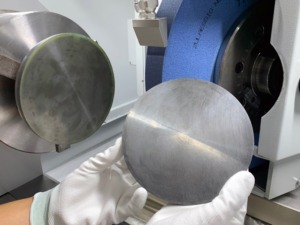
Manufacturing a puck is a challenge due to the material (SiC)
The advantages of silicon carbide (SiC), the material for semiconductors of the newer generation, are its high dielectric strength and high thermal conductivity. The material is produced as a single crystal from a gas phase at about 2400°C in special furnaces. In a two-week process, the so-called boule grows, which then has to be transformed into a “wafer blank”, the puck. Due to the high hardness of SiC, grinding is the most productive manufacturing method for this.
The further processing of a boule into a puck, from which the wafers are cut in a later work step, previously comprised several individual process steps, some of which involved considerable manual effort. The costs for processed wafers depended heavily on the number and complexity of these process steps.
The American special machine manufacturer USACH has now taken on this problem and developed a machine concept with the BOULEPRO 200AX that combines, automates and optimises all process steps for producing the puck. USACH belongs to the American Hardinge Group and specialises in the manufacture of customised grinding machines for materials that are particularly difficult to machine. The Hardinge Group also includes the Swiss grinding specialist Kellenberger with the brands Voumard and Hauser.
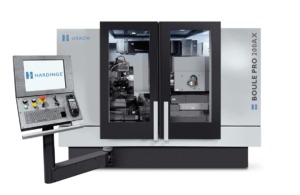
The newly developed BOULEPRO 200 AX for grinding SiC pucks
Responsible for the BOULEPRO project is Jeff Gum, new materials specialist at Hardinge. His development team of engineers and application technicians, with the support of SiC industry experts and raw material suppliers, analysed the inefficiencies of the previous SiC boule processing and optimised the processes. The result is the automated all-in-one 5-axis BOULEPRO 200AX machine, on which the workpiece can be aligned and machined to the desired specifications. All currently relevant diameters of SiC boules can be processed on the BOULEPRO.
The BOULEPRO 200AX dramatically reduces the processing time of a boule into a puck. While conventional processes take more than 24 hours, with the BOULEPRO it is only 2 to 3 hours when loading and unloading is automated. This time saving contributes to an overall cost reduction of almost 70 per cent when labour, production area, scrap, capacity efficiency and consumables are taken into account.
A key factor in the machine’s exceptional efficiency lies in the newly developed workpiece fixture by clamping tool manufacturer Forkardt, also part of the Hardinge Group, which holds the boules securely without glue or manual intervention. This tool holder uniquely combines a claw chuck, which is perfect for clamping the out-of-round outer diameter of the boules before machining, with a vacuum chuck for securely holding the flat surface of the boules.
The BOULEPRO is equipped with an integrated X-ray diffraction system that is used to determine the crystal orientation at the beginning of the machining process. The X-ray diffraction system indicates how much the crystal faces need to be adjusted during the final machining. This Single-Step Dual plane Compensation (SSDP) process, which has emerged from the development process and is now patent pending, is the important step in Boule machining that ensures that the Boule is machined in the optimum crystal orientation.
The process flow for machining a boule can be adapted depending on the specification. It starts with the evaluation of the crystal orientation by means of X-ray diffraction and is followed by the pre-grinding of the outer diameter and the application of a rough dome grind. After another measurement of the crystal structure, the orientation is corrected again by a final dome grind before transfer to the counter spindle. There, the nucleus side is ground. A further confirmation measurement by X-ray diffraction is followed by the application of a final outer diameter and the marking necessary for further machining by a flattening or notch.

Process sequence for the production of a SiC puck: pre-grinding of the outer diameter; rough dome grinding; X-ray exposure; completion of the dome grinding in the correct orientation; transfer to the counter spindle; removal of the seed side; X-ray exposure for confirmation; finish grinding of the outer diameter and flattening/notching.
One advantage of being able to perform X-ray diffraction analysis even during machining is that it is possible to change the sequence at each step of the process. For example, the flattening or notch can be applied at a later stage in the process than was previously the case, and its alignment is then very accurate. Due to the flexibility in the sequence of steps in the BOULEPRO process and the strict control of all parameters, the machine produces the angular correction of the crystal orientation up to 100 times more accurately than any previous process.
Additional functions of the BOULEPRO 200AX
The BOULEPRO 200AX can be optionally equipped with further functions. One of these is the identification of foreign polytypes by UV light testing. When SiC boules are placed under UV light, certain foreign polytypes, such as 6H, show up in a different colour. By identifying the position of the 6H inclusions, they can be removed during processing, ensuring that the final SiC puck contains only the desired 4H polytype.
Another option is a laser for labelling the finished SiC puck with, for example, a batch number, which is important for material tracking. By integrating an image processing system, high-quality photos of the workpiece can be taken at every stage of the process.
The BOULEPRO 200 AX will be introduced to all markets in Europe, the USA and Asia in the autumn. Jeff Gum is convinced: “Our machine concept will change the hotly contested future market of SiC wafer production forever. In terms of quantity and especially in terms of quality.”

